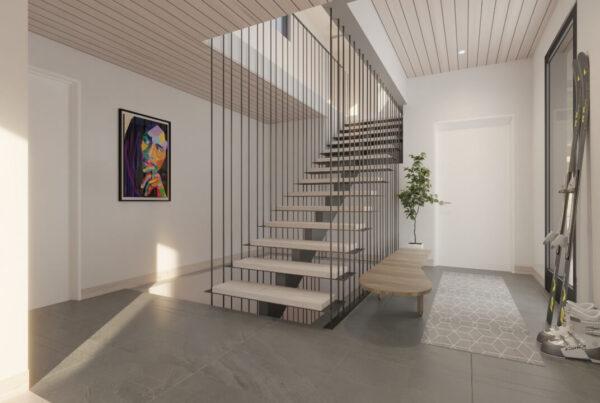Variable Refrigerant Volume (VRV) HVAC units and Roof Top Units (RTU) have become increasingly popular in construction applications due to their flexibility and energy efficiency. VRV systems are comprised of multiple smaller indoor units that individually control the temperature for each room, allowing for zoned climate control with great accuracy. This makes it ideal for commercial buildings that require variable usage areas. In addition, VRV systems are more energy efficient as they can operate in variable speed mode, meaning the compressor runs at different levels depending on the indoor and outdoor temperature.
On the other hand, Roof Top Units (RTU) provide a simpler solution with fewer components and less complexity. RTUs are ideal for larger buildings with a consistent temperature requirement across the entire building. RTUs are often more cost-effective, as they require fewer parts and less installation work than VRVs.
Overall, when deciding between variable refrigerant volume (VRV) HVAC units and roof top unit (RTU) in construction projects, it is important to consider the size of the building, the temperature requirements, and the budget. VRVs are best suited for large buildings with variable temperature requirements, while RTUs provide a simpler and more cost-effective solution for larger buildings with consistent temperature needs. Ultimately, both solutions can be beneficial when used in the right context. Choosing between the two should be based on the specific needs of the project in order to ensure maximum efficiency and cost-effectiveness.
By understanding the advantages and disadvantages of variable refrigerant volume (VRV) HVAC units and roof top unit (RTU), construction professionals can make informed decisions regarding which type of system is best suited for their project. VRV systems provide increased energy efficiency, greater design flexibility and better temperature control. However, they can be costlier to install due to the need for additional components such as multiple air handlers. RTUs, on the other hand, are simpler and more economical solutions for larger buildings with consistent temperature needs. Ultimately, both options can be beneficial when used in the right context. In any case, construction professionals should carefully consider their building’s specific needs before making a final decision about which type of HVAC system to install.
In summary, variable refrigerant volume (VRV) systems and roof top units (RTU) both have advantages and disadvantages that construction professionals should consider when deciding on the best HVAC system for a building. VRV systems can provide variable temperature control and are more suitable for buildings with variable load requirements, while RTUs are simpler, economical solutions for larger buildings with consistent temperature needs. It is important to weigh all options before making a final decision about which type of HVAC system to install.





